The OSFP connector is a groundbreaking development in high-speed data communication designed to meet the growing bandwidth requirements of current network infrastructures. This guide focuses on Amphenol and TE Connectivity’s offerings, showcasing their creative solutions in OSFP technology. For engineers, network administrators, and industry professionals alike, this article will be a complete manual on connectors’ key specifications and performance metrics, from integration capabilities to application scenarios. It hopes to provide such an overview for all parties involved. Readers will be better positioned to meet their networking needs if they understand what OSFP connectors can do.
What is an OSFP Connector?
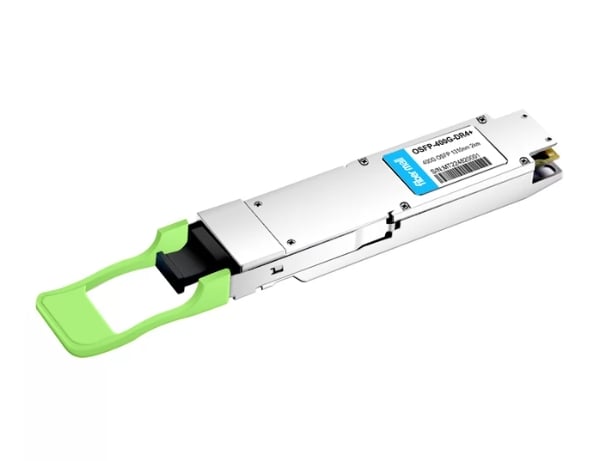
Understanding the OSFP Interconnect System
The OSFP interconnect system is built to support high-speed data transfer in various applications such as data centers and high-performance computing. The compact design of this system can hold up to eight lanes of data transmission, where each lane can deliver 25 Gbps, thus achieving a total bandwidth of 400 Gbps per connector. It stands out with its sturdy form factor, which allows for better cooling management and easier cable assembly, making it reliable and easy to deploy in dense networking environments. Also, the OSFP specification provides backward compatibility with current infrastructure, ensuring a smooth transition when organizations upgrade their network capabilities.
Difference Between OSFP and QSFP-DD
The difference between OSFP (Octal Small Form-factor Pluggable) and QSFP-DD (Quad Small Form-factor Pluggable Double Density) is in the design and data transmission capabilities. OSFP can deliver up to 400 Gbps through eight lanes while both connectors support high-speed data rates. As for QSFP-DD, it achieves similar total bandwidth by doubling the density of the existing QSFP28 design, allowing it to have four lanes of 50 Gbps each. Besides, unlike OSFP, whose connectors are larger and promote better thermal management and easier handling during installation, QSFP-DD occupies less space but maintains a compact form factor for higher-density configurations. Ultimately, specific application needs will determine whether one should choose these two connector types based on available space and performance requirements within networking environments.
Applications of OSFP Connectors in Data Centers
OSFP connectors in data centers are increasing because they can transmit large amounts of data and manage heat well. These connectors are best for high-performance computing (HPC) applications, massive cloud services, and artificial intelligence (AI) workloads where quick data transfer is crucial. Further, 400G Ethernet deployments that support multiple 100G links in a single connection benefit from the ability to create high-density interconnects using OSFP connectors. Their sturdy design makes them easy to fit into current systems, which allows for scaling up operations at data centers without significant renovations. With growing network demands, more enterprises will adopt this technology, thus improving throughput rates and efficiency levels within their DC environments.
How to Install an OSFP Connector?
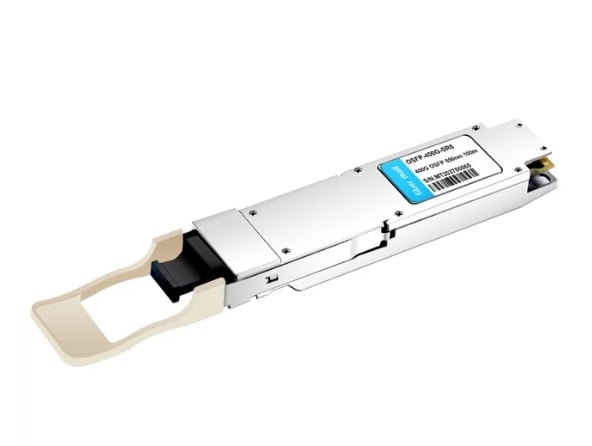
Step-by-Step Guide to OSFP Connector Assembly
- Preparation: Confirm that you have the necessary tools and materials, such as OSFP connectors, fiber cables, and precision tools like scissors or a crimping tool.
- Stripping of Cable: Strip off the outer jacket around the fiber optic cables with caution so as not to damage them. Usually, it is advisable to strip about 1-2 inches of outer cover, followed by stripping buffer and coating layers from fibers.
- Fiber Cleaving: Use a cleaver to trim the exposed ends of fibers to create a clean, flat surface. This step ensures minimum insertion loss while maximizing performance.
- Connector Assembly: Insert the OSFP connector into the cleaved fiber end until it reaches the stop point indicated. In addition, ensure proper alignment between the connector and the fiber channel inside the housing OSFP.
- Crimping: Secure the connector using a crimping tool, but be careful not to apply too much pressure, which may break the fiber.
- Testing: After the assembly has been completed, testing should be done using an appropriate optical tester. This tester checks if insertion losses are within acceptable limits and confirms proper functioning.
- Final Inspection: Check visually assembled connectors for any damages or misalignment signs, then clean properly with cleaning wipes explicitly designed for use on optical fibers
These steps should guarantee success when assembling OSFP connectors, allowing networking applications to perform optimally.
Tips for Ensuring Signal Integrity
To maintain the signal quality in a fiber optic network, here are some of the key things to keep in mind:
- Reduce the Bend Radius: Follow manufacturer specifications for bend radius. If not, excessive bending can cause extra loss or damage to the fiber.
- High-quality components: Get suitable connectors and cables that meet industry standards. Poorly made components may cause considerable signal loss.
- Proper cleaning: Dust and dirt can affect transmission; hence, regular clean-up using appropriate cleaning solutions/tools on optical connections should be done.
- Avoid congestion: Overcrowding electromagnetic interference may be created when other cables/components crowd around fiber routes.
- Consistent testing: Regularly test your system with Optical Time Domain Reflectometers (OTDR), which help you quickly identify performance issues that compromise signal integrity.
- Environmental considerations: Install Fibre Optic Cables in environments with specified temperature/humidity limits so as not to damage them or ensure their reliable functioning at all times.
By observing these practices within your fiber optic networks, signals will be protected, thus enhancing their general reliability and effectiveness.
Role of EMI Springs in OSFP Connectors
Electromagnetic interference (EMI) springs are critical in ensuring OSFP (Octal Small Form-factor Pluggable) connectors work well in high-speed networking applications. These springs are made to ground and shield effectively, reducing electromagnetic noise that can interfere with signal transmission. EMI springs lessen crosstalk by providing a low-resistance path to the ground, maintaining clear and steady signals. Also, the mechanical properties of these features ensure reliable contact pressure, which is important for preserving connection reliability over time. When appropriately used in OSFP connectors, EMI springs improve overall system performance while meeting industry signal integrity and electromagnetic compatibility standards.
What are the Key Features of Amphenol OSFP Connectors?
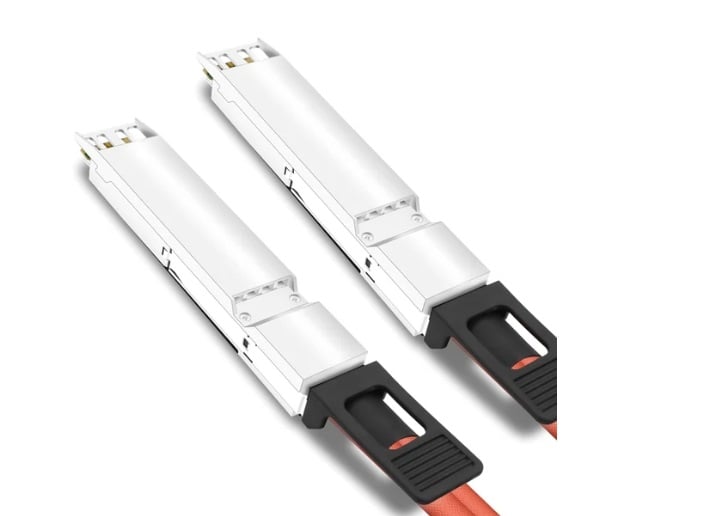
Amphenol OSFP Series Overview
Amphenol OSFP (Octal Small Form-factor Pluggable) connectors are designed for high-density data center applications in optical networking to cater to the growing demand for bandwidth and speed. Some of the key features include:
- High Data Rate Capability: These connectors can support very high data rates, up to 400 Gbps, which makes them suitable for next-generation networking applications that require significant bandwidth.
- Robust Design: Amphenol OSFP connectors are built tough, with sturdy housing that can withstand harsh environmental conditions and excellent EMI shielding characteristics for protecting signal integrity.
- Ease of Use: The design incorporates a tool-less insertion and extraction mechanism allowing quick connections and disconnections, which is essential in data centers where uptime is critical.
- Compatibility and Scalability: The connectors have been made backward compatible with existing systems, easily fitting into current architectures while providing scalability for future upgrades.
Thus, by integrating such advanced features, Amphenol OSFP connectors provide a reliable solution for achieving high-speed data transmission while maintaining signal integrity and system performance.
Advantages of Amphenol OSFP Connectors
High-performance networking environments prefer Amphenol OSFP connectors because of several advantages they have, which are:
- Increased BW Efficiency: This design allows for higher signal density in the connector. Therefore, it maximizes the use of resources and space within data centers as bandwidth needs increase.
- Better Heat Management: These connectors are made from materials that help dissipate heat, thus minimizing the chances of overheating in high-density applications. This also increases the longevity and reliability of networking equipment.
- Flexible Connection Options: These connectors support different types/optical modules, making them flexible across different network setups. This ensures compatibility between what is available now and new technologies that will come up later on. Such a feature is essential for ensuring your network infrastructure doesn’t become obsolete.
- Easier Maintenance: Toolless designs make installations easier but, more importantly, help reduce maintenance downtime since connection management can be done quickly without requiring much time from technicians, improving overall operational efficiency.
Amphenol OSFP connectors provide current solutions to meet all necessary demands while being able to adjust toward future needs; hence, they should be seen as strategic investments for changing data center operations.
Thermal Performance and Built Quality
Amphenol OSFP connectors stand out for their superior thermal performance and reliable construction, critical in ensuring networking equipment remains dependable in high-density settings. To improve heat dissipation, the connectors utilize advanced materials that efficiently distribute thermal loads to prevent overheating. This is particularly important since excess heat can cause signal disruption and damage.
Due to their manufacturing quality, these connectors meet strict industry standards; therefore, they are built to last across different environments. In addition to increasing mechanical strength, their rugged design protects against environmental factors, making them ideal for use in high-demand data center applications. Additionally, because no tools are required to install or maintain these devices, such processes become faster and more straightforward — an essential attribute when dealing with networks that need constant availability. Thus, this makes Amphenol OSFP connectors extremely dependable for future-ready network infrastructures due to their outstanding thermal management capabilities and robust build quality.
How Do TE Connectivity’s OSFP Connectors Compare?
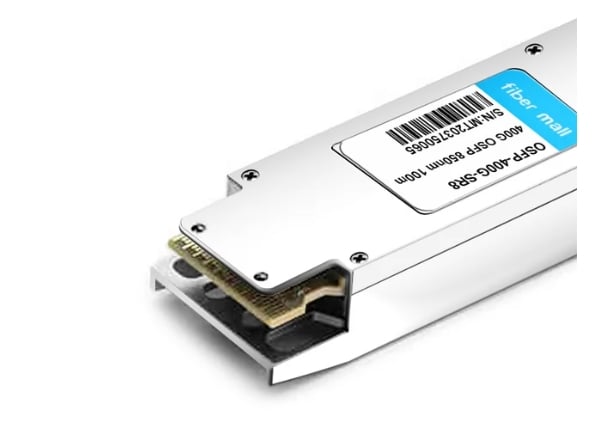
Overview of TE Connectivity’s OSFP Interconnect System
TE Connectivity’s OSFP (Octal Small Form-factor Pluggable) interconnect system is developed for data centers that require high bandwidth and density networks. The design is known for its scalability, which enables it to accommodate data rates of up to 400 Gbps across various applications, including telecommunications and enterprise networking. To ensure low-loss electrical performance in high-speed transfers, the connectors use cutting-edge technology to maintain signal integrity.
Moreover, TE Connectivity’s OSFP connectors have superior thermal management properties, allowing them to dissipate heat effectively. Like competitors’ products, the robust mechanical design can last long, even under harsh conditions. In addition, keying mechanisms are used on these connectors so as not to match different types, thereby ensuring safety for users while enhancing system integrity overall. This means that TE Connectivity’s OSFP interconnect system is an all-in-one solution capable of meeting modern data transmission infrastructure needs both now and in the future.
Performance in Serial Applications
The ability of TE Connectivity’s OSFP connectors in a serial application is determined by their ability to sustain high-speed data rates while ensuring signal integrity. In serial applications, it’s expected that large amounts of data over long distances must be reliably transmitted; therefore, the OSFP design has been optimized for this. TE’s OSFP connectors can reach up to 400 Gbps of data throughput and support emerging technologies like 400G Ethernet and Fibre Channel for high-performance computing and data center needs.
These connectors’ advanced design minimizes signal degradation and latency in real-world use cases—critical features enabling serial communications to operate at peak efficiency. The different types of serial protocols supported by the connector also add versatility when integrating them into various networking environments. Additionally, its capability for thermal management ensures consistent performance during heavy load conditions, increasing system reliability in mission-critical applications. Overall, TE Connectivity’s OSFP connectors offer rugged solutions appropriate for modern serial data transmission demands.
1 x 4 and 1 x 1 OSFP Configurations
TE Connectivity offers OSFP connectors in different types, such as 1 x 4 and 1 x 1. The 1 x 4 configuration connects one host to four ports for better performance in high-density data centers that need efficient resource management and increased throughput. It is most helpful in combining traffic from many links to optimize bandwidth usage within data centers or high-performance computing environments.
On the other hand, a direct point-to-point connection exists using the 1 x 1 OSFP design. This approach allows for exclusive bandwidth without multiplexing, making it suitable where latency must be kept at its lowest, thus ensuring utmost reliability on critical applications. Both structures safeguard thermal performance and signal quality, making them ideal for contemporary data transmission systems. Hence, organizations can choose their preferred configurations based on networking requirements while effortlessly integrating TE Connectivity’s OSFP solutions into their infrastructure.
What are OSFP Cages and Cable Assemblies?
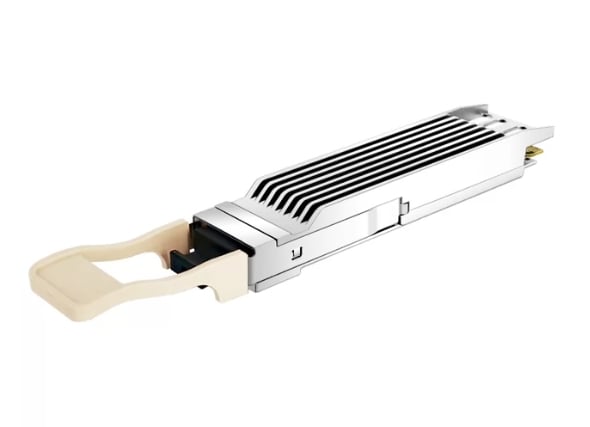
Types of OSFP Cage Assemblies
OSFP cages are important components that house the OSFP connectors and help them connect properly to printed circuit boards (PCBs). These assemblies come in different kinds depending on configuration and application requirements. The most common ones include:
- Standard OSFP Cages: They are designed for flexibility to fit the 1 x 4 or the 1 x 1 configurations. Furthermore, they provide mechanical support and manage heat better than other types during data transmission.
- Custom OSFP Cages: This category comprises specially made products catering to unique design constraints such as size, environmental factors, and performance metrics. These solutions allow customization for various high-density applications.
- Shielded OSFP Cages: These assembly parts include electromagnetic shielding, which reduces interference from outside sources to ensure high signal integrity, especially where there is a lot of electronic noise.
By choosing suitable OSFP cage assemblies, integrators can improve system performance and reliability while meeting the specific needs of different networking applications.
Benefits of Different Cable Assemblies
Cable assemblies are essential to efficient and reliable data transmission in networking environments. The advantages of using the right cable assemblies for OSFP connections include:
- Enhanced Signal Integrity: Quality cable assemblies utilize materials and manufacturing processes that minimize attenuation and crosstalk, even at long distances. This is vital to sustaining high-speed connectivity.
- Increased Longevity: Many cables are constructed from durable materials that resist external influences such as changing temperatures, wetness, or physical pressure. Such strength guarantees prolonged use while minimizing frequent replacement costs, thus saving businesses money.
- Easy Installation & Maintenance: The cable assembly design may feature bend radius control among other flexible routes, making installing different systems easy. Due to simplification during future maintenance work, the speed of deployment will increase.
Overall, the choice of appropriate cable assemblies greatly impacts performance reliability efficiency when used in OSFP-based networking systems.
Integration with PCB and Data Rates
Regarding high-speed networking, one of the most important factors is the integration between cable assemblies and printed circuit boards (PCBs). This includes determining data rates that support high-frequency signals by ensuring compatibility with PCB design, such as trace widths and spacing. The leading industry standards like PCIe, Ethernet, and InfiniBand suggest routing guidelines that reduce impedance mismatch and crosstalk for optimal performance.
Moreover, materials selection for assembly cables can significantly impact signal velocity propagation speed and overall throughput. For example, low dielectric constant insulations perform better than others. Also, multilayer substrates used in recent years and embedded passive components have made it possible to achieve higher data rates while still accommodating complex designs. Therefore, effective integration improves signal integrity and increases network systems’ scalability and flexibility as bandwidth requirements grow.
Reference Sources
Frequently Asked Questions (FAQs)
Q: What is an OSFP Connector?
A: An OSFP (Octal Small Form Factor Pluggable) Connector is a high-speed, pluggable optical transceiver used in data communications and designed to support data rates up to 400 Gbps.
Q: How does the OSFP footprint optimize signal integrity performance?
A: The OSFP footprint is optimized for signal integrity performance through its 8-lane design, allowing efficient data transmission while minimizing signal loss and interference.
Q: What are the benefits of the OSFP interconnect system?
A: The OSFP interconnect system has 60 contacts per port, supporting high data rates and providing superior signal integrity. Its design allows for efficient thermal management and high port density, fitting up to 36 ports per 1RU switch form factor.
Q: Which companies are key players in offering OSFP connectors and cage assemblies?
A: Amphenol, TE Connectivity, and Molex are prominent manufacturers offering high-quality OSFP connectors and cage assemblies, ensuring reliable performance in data communication applications.
Q: What is the maximum data rate supported by OSFP connectors?
A: These connectors can utilize PAM—4 modulation for fast data transfer between devices at up to four hundred gigabits per second.
Q: How many contacts per port does an OSFP interconnect system have?
A: An OSFP interconnect system has 60 contacts per port, which helps achieve high data rates while ensuring excellent signal integrity.
Q: What is the importance of the 8-lane design in OSFP connectors?
A: Data transmission capabilities are improved by the 8-lane design present in OSFP connectors. This consequently enhances overall signal integrity and supports high-bandwidth applications.
Q: How does the OSFP interconnect system enable configurations with a high density of ports?
A: An OSFP interconnect system’s ability to accommodate up to 36 ports per switch form factor that occupies one rack unit (1RU) makes efficient use of space within data centers possible.
Q: What role does a Multi-Source Agreement (MSA) play in OSFP connectors?
A: MSA stands for multi-source agreement, which defines industry standards for OSFP connectors among different manufacturers to ensure interoperability and compatibility and promote wide acceptance of this technology.
Q: In what way do optical systems and PAM-4 interconnect systems support applications using OSFPS?
A: Using optical systems with pam4 drivers provides higher throughput rates and better signal quality throughout the network, making it more reliable overall.
Related Products:
-
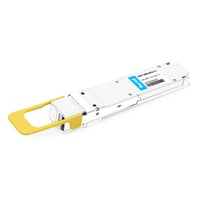 OSFP-400G-DR4-FLT 400G OSFP DR4 Flat Top PAM4 1310nm MTP/MPO-12 500m SMF FEC Optical Transceiver Module
$800.00
OSFP-400G-DR4-FLT 400G OSFP DR4 Flat Top PAM4 1310nm MTP/MPO-12 500m SMF FEC Optical Transceiver Module
$800.00
-
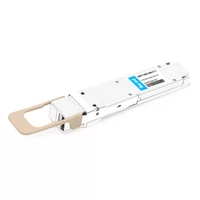 OSFP-400G-SR4-FLT 400G OSFP SR4 Flat Top PAM4 850nm 30m on OM3/50m on OM4 MTP/MPO-12 Multimode FEC Optical Transceiver Module
$650.00
OSFP-400G-SR4-FLT 400G OSFP SR4 Flat Top PAM4 850nm 30m on OM3/50m on OM4 MTP/MPO-12 Multimode FEC Optical Transceiver Module
$650.00
-
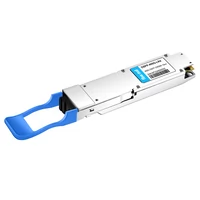 OSFP-400G-LR4 400G LR4 OSFP PAM4 CWDM4 LC 10km SMF Optical Transceiver Module
$1199.00
OSFP-400G-LR4 400G LR4 OSFP PAM4 CWDM4 LC 10km SMF Optical Transceiver Module
$1199.00
-
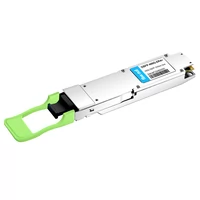 OSFP-400G-DR4+ 400G OSFP DR4+ 1310nm MPO-12 2km SMF Optical Transceiver Module
$879.00
OSFP-400G-DR4+ 400G OSFP DR4+ 1310nm MPO-12 2km SMF Optical Transceiver Module
$879.00
-
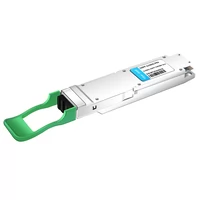 OSFP-2x200G-FR4 2x 200G OSFP FR4 PAM4 2x CWDM4 CS 2km SMF FEC Optical Transceiver Module
$3000.00
OSFP-2x200G-FR4 2x 200G OSFP FR4 PAM4 2x CWDM4 CS 2km SMF FEC Optical Transceiver Module
$3000.00
-
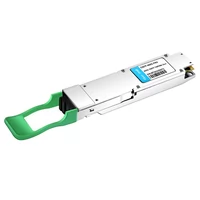 OSFP-400G-FR4 400G FR4 OSFP PAM4 CWDM4 2km LC SMF FEC Optical Transceiver Module
$900.00
OSFP-400G-FR4 400G FR4 OSFP PAM4 CWDM4 2km LC SMF FEC Optical Transceiver Module
$900.00
-
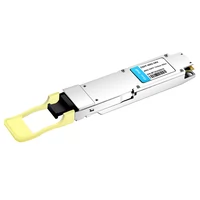 OSFP-400G-DR4 400G OSFP DR4 PAM4 1310nm MTP/MPO-12 500m SMF FEC Optical Transceiver Module
$900.00
OSFP-400G-DR4 400G OSFP DR4 PAM4 1310nm MTP/MPO-12 500m SMF FEC Optical Transceiver Module
$900.00
-
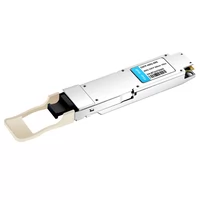 OSFP-400G-SR8 400G SR8 OSFP PAM4 850nm MTP/MPO-16 100m OM3 MMF FEC Optical Transceiver Module
$480.00
OSFP-400G-SR8 400G SR8 OSFP PAM4 850nm MTP/MPO-16 100m OM3 MMF FEC Optical Transceiver Module
$480.00
